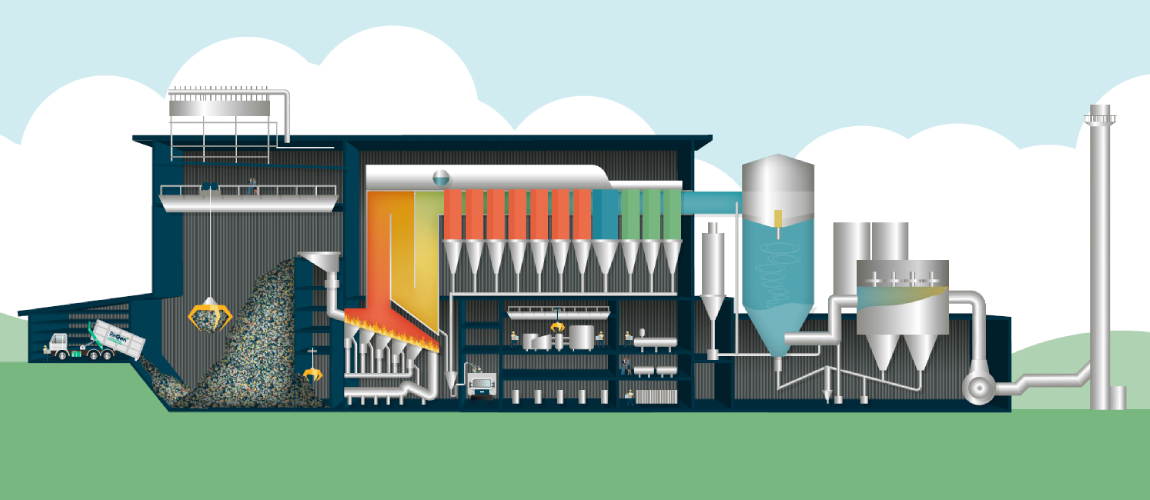
A multimillion-dollar project is underway to turn the George Town Landfill site into a green space and build ReGen, Cayman’s Energy & Recycling Centre. When finished, this modern infrastructure will include an energy recovery facility that will turn materials that aren’t recycled into electricity to power our homes and businesses.
Combined with initiatives to encourage residents to reduce, reuse and recycle, energy recovery facilities avoid the use of imported non-renewable energy sources and lessen methane emissions from landfilling. Despite these benefits, inaccuracies abound about energy recovery centres.
Myth #1: Energy recovery facilities produce harmful air emissions.
The ReGen energy recovery facility will be constructed and operated to the European Union Industrial Emissions Directive, which is considered the highest global standard. Energy recovery facilities are often located in city centres, close to the communities they serve. Examples can be found in Amsterdam, Vienna, Munich, Copenhagen and Mallorca. ReGen will be built to the same standards as these facilities that operate in densely populated areas.
Myth #2: Recycling is a better solution.
While recycling and energy recovery facilities are often pitted against each other in public discourse, the reality is that both are important aspects of Cayman’s waste management hierarchy. However, not all products can be recycled locally. Although Plastics 1 and 2 are collected for recycling, many other types of plastic go to the landfill. The energy recovery facility will provide the opportunity to reduce the amount of unrecyclable waste that heads to the landfill.
Myth #3: Energy recovery facilities discourage recycling.
Rather than discouraging recycling, statistics from both the U.S. and Europe actually demonstrate a positive correlation between energy recovery facilities and recycling rates. Countries like Switzerland, Germany, Sweden and Belgium, which have the lowest levels of landfilling, also have the highest levels of both recycling and energy from waste.
Myth #4: Energy recovery facilities contribute to climate change.
Contrary to popular belief, energy recovery facilities are a net benefit for the climate and help avoid greenhouse gas emissions. The carbon stored within products made from living organisms (such as paper, food waste, etc.) would be released whether those products end up in a landfill or an energy recovery facility. By sending those products to an energy recovery facility instead, we reduce the impact of methane emissions and have the opportunity to generate energy that would otherwise come from fossil fuel-powered generators.
Myth #5: The ash produced is contaminated and cannot be used.
Energy recovery facilities produce two types of ash: bottom ash and fly ash. Bottom ash contains valuable materials in the form of ferrous and non-ferrous metals that can be removed, reused and sold to overseas buyers. The remaining bottom ash can be used as secondary aggregate in construction. Although fly ash on its own is classed as a hazardous material, with further treatment, the ash can be safely disposed of in an engineered landfill or made suitable for use in concrete or asphalt.
This article appears in print in the June 2021 edition of Camana Bay Times, written by Hannah Reid.
